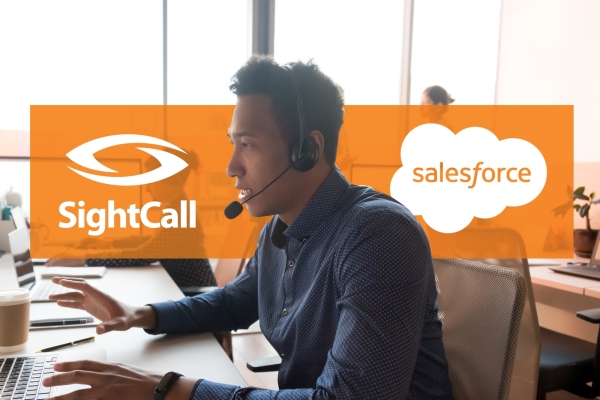In a globalized world where work-from-home and remote solutions have emerged as a permanent reality, there is a clearer need for visual assistance tools built for enterprises. For Salesforce users, these enterprises are not looking to completely overhaul the way they do things with their CRM system, only to make them better.
Most visual assistance tools on the market satisfy only a limited number of needs while still leaving room for improvement. Their users describe a number of “nice-to-haves” that would vastly improve output and productivity. Users may experience video calls with clients or technicians who have a spotty picture or poor connectivity, making it difficult to solve an issue. There may be multiple steps involved in transferring data from the virtual session to Salesforce, forcing an agent to use disparate systems and discouraging adoption. If a company operates across continents and borders, it may also be concerned about the portability of virtual solutions due to compliance with data regulation and privacy laws.
So, what makes SightCall different than the average video tool on the market? To us, these features and customer concerns are not mere nice-to-haves – they are considered the essentials that represent the future of enterprise-grade visual assistance solutions. Salesforce possesses built-in chat, text, email and voice features, but does not have video capability of its own. Enter SightCall, a fully integrated platform with minimal setup time that provides AR and AI-driven virtual assistance as an extension and augmentation of the Salesforce Omnichannel.
Full and unfettered integration means that high-definition video sessions can be set up and managed through the Salesforce console. For instance, when a customer approaches a business to help with a product issue, a support agent can launch a SightCall session with the click of a button inside the console, sending an SMS link to the session and walking the customer through the solution remotely.
The agent can employ tools like telestration, or pointer, drawing directions or diagrams on the screen the customer can see and follow. They can turn on the customer’s iPhone flashlight remotely, to give another example. The agent is also able to screen share what they see or share to an app and link with the customer through this feature. Businesses find they are able to maximize their resources by handling numerous inquiries without stepping out into the field, with the added benefits of an 81% increase in first-time fixes, a 69% decrease in issue resolution time, and technician training time almost halved.
The administrative benefits are even greater. Consider a Data Warehousing Institute study, which estimates that bad, inaccurate or missing data costs American businesses some $600 billion every year. Clerical errors and inaccuracies have a tangible negative impact, and companies without clear recordkeeping methods are at a clear disadvantage to competitors for strategy and growth.
Two SightCall features help remedy this problem. On a virtual assistance call with a customer, a user can employ the Smart Optical Character Recognition feature to capture text, read barcodes or QR codes and immediately transfer the data to their Salesforce file, entirely eliminating manual transcription and the errors that can come with it. AR Smart Measure performs a similar function, accurately capturing a surface area between two points the user traces with their finger, without the need for a manual ruler and with the ability to instantly feed the data back to the customer file.
Accentuating these features is a high level of compliance with data regulation and privacy laws, both at home and around the world. Medical providers employing SightCall for Salesforce Telehealth can be assured that the platform can easily create HIPAA-compliant visual assistance use cases. SightCall is also adapted to the General Data Protection Regulation (GDPR)) developed by the European Union in 2018, as well as the California Consumer Privacy Act (CCPA), which also came into force that year.
The GDPR forms some of the most robust privacy protections for consumers in the world and pertains to company collection, transmission, hosting or analysis of personal data among EU member states. The CCPA covers the same for American citizens residing in California. Using SightCall provides both portability for operations wherever your company is or seeks to grow, and consistency through the ability to use one virtual assistance platform across the board.
SightCall’s transformative difference is in the suite of features and services it provides to Salesforce users — and those features are only growing. Keep in touch with us as the features we offer expand, or speak with a representative now for a personalized demo to see how we can help you.



